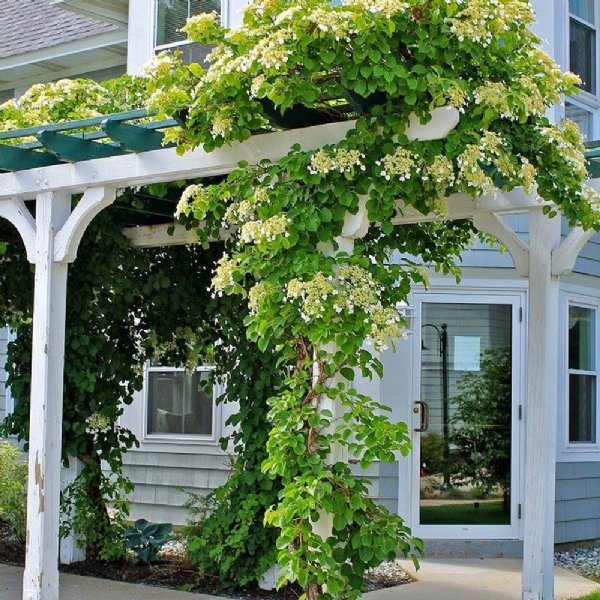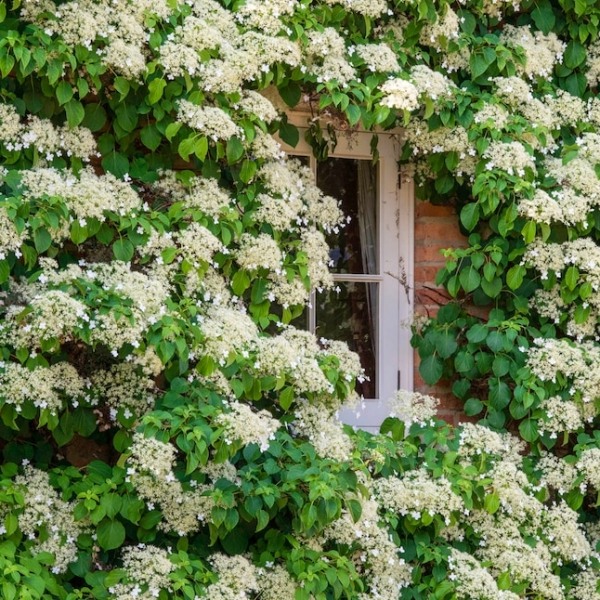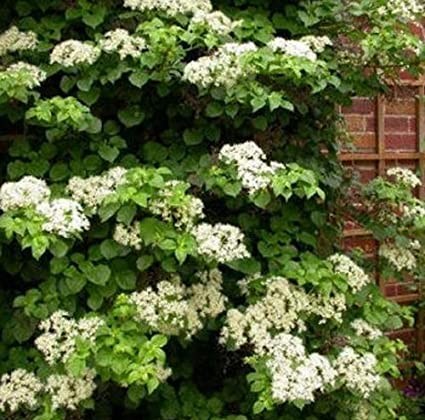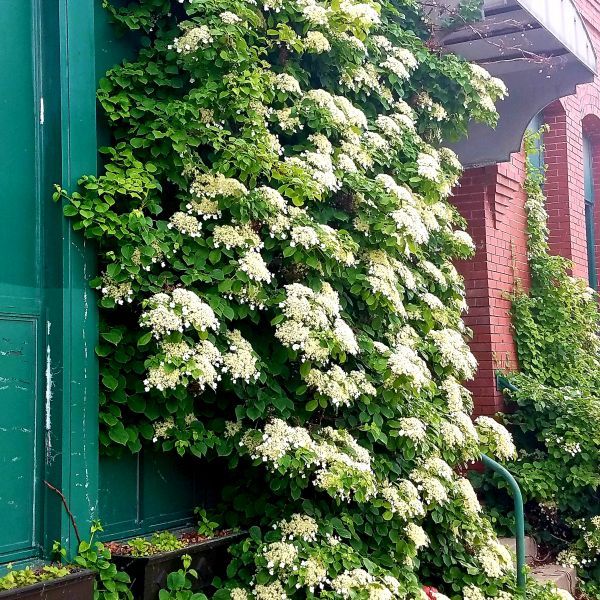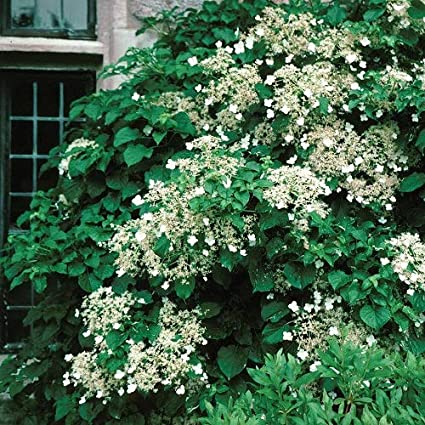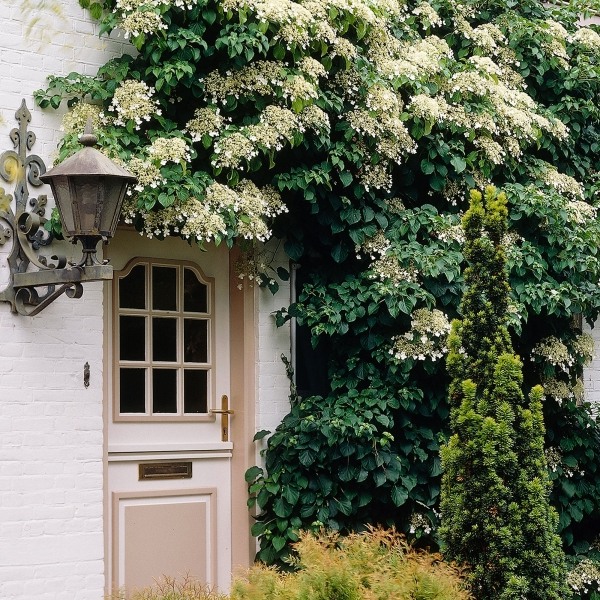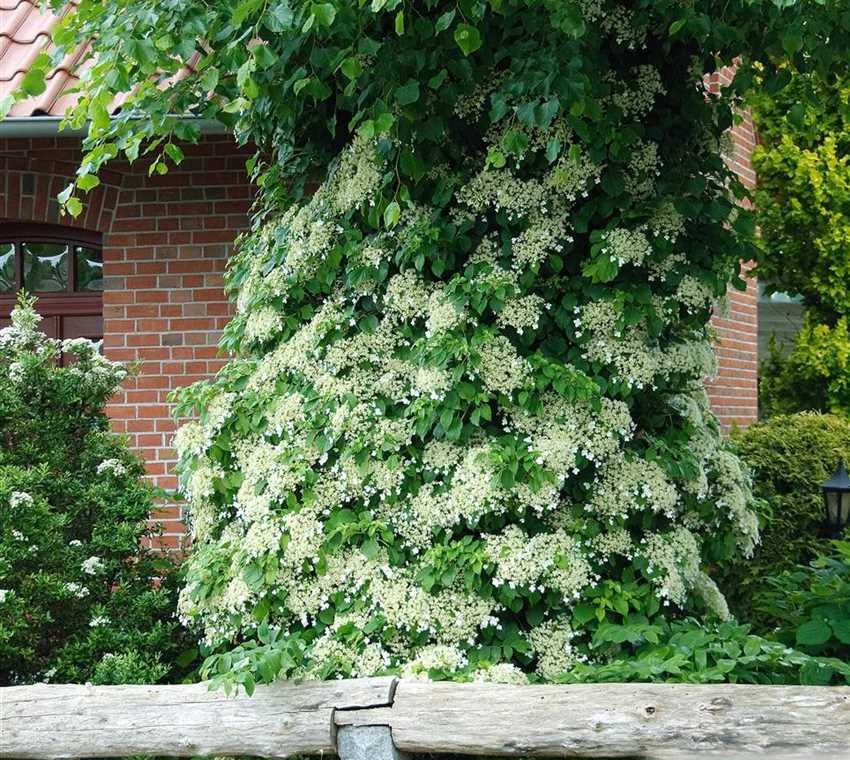Climbing Hydrangea Petiolaris
| hydrangea | vine |
It is a perennial, fragrant, flowering vine, see how the Climbing hydrangea petiolaris looks like in the garden and landscape.
Climbing Hydrangea Petiolaris is suitable for growing in USDA hardiness zones: 4a, 4b, 5a, 5b, 6a, 6b, 7a, 7b, 8a, 8b, 9a. Other winter zone scales for planting this hydrangea are ANBG: 1, 2, 3; RHS: H7, H6, H5, H4; PHZ: 5a, 5b, 6a, 6b, 7a, 7b, 8a, 8b, 9a.
Hydrangea details
| Plant type | vine, flowering, fragrant | ||||||||
| Life cycle | perennial | ||||||||
| Sun needs | part shade, full sun, part sun | ||||||||
| Growth habit | upright, climbing, trailing, twining, spreading | ||||||||
| Flowering period | mid-spring, early summer | ||||||||
| Height at maturity | 9 m | ||||||||
| Spread | 60 sm | ||||||||
| Spacing | 1 m apart to cover walls and fences | ||||||||
| Soil type | loamy, clay, silty | ||||||||
| Soil moist/drainage | well drained moist, moderately drained, well drained | ||||||||
| Soil PH | 5.5 - 7.0 (moderately acidic - neutral) | ||||||||
| Water needs | average, low when established | ||||||||
| Maintenance / care | low | ||||||||
| Resistance to | drought, heat, humidity, deep shade | ||||||||
Winter hardiness zones:
| |||||||||
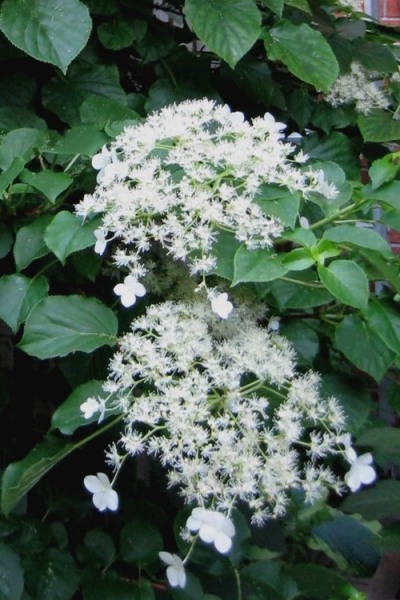 Hydrangea petiolaris (Hydrangea anomala subspecial petiolaris), a climbing hydrangea, is a species of flowering plant in the family Hydrangeaceae native to the woodlands of Japan, the Korean peninsula, and on Sakhalin island of easternmost Siberia in the Russian Far East.
Hydrangea petiolaris (Hydrangea anomala subspecial petiolaris), a climbing hydrangea, is a species of flowering plant in the family Hydrangeaceae native to the woodlands of Japan, the Korean peninsula, and on Sakhalin island of easternmost Siberia in the Russian Far East.
Climbing hydrangea petiolaris vine is sometimes treated as a subspecies of the closely related Hydrangea anomala from China, Myanmar, and the Himalaya.
Climbing up to 40 feet or more in height, the Climbing Hydrangea Petiolaris provides wonderful texture and color as a vertical accent on home foundation or other walls, trellises, arbors, pergolas, and tree trunks. A fine addition to Hydrangea gardens, white gardens, fragrance gardens and cottage gardens.
In May and June the vine produces abundant, large, 7 to 8-inch diameter lacecap clusters of wonderfully fragrant white flowers at the ends of branches that can extend up to 3 feet from the tree trunk or other supporting structure.
Planting the Climbing Hydrangea Petiolaris is the perfect way to soften and decorate a trellis, tree trunk, or stark brick or stone garden wall. The dried flower clusters and reddish brown peeling bark are attractive in winter. No attachments are necessary for this vine to climb as it naturally clings to bark, wood, brick and other surfaces using its own aerial roots, which won't harm your walls or trees.
When not in flower the pretty, the heart-shaped leaves of Hydrangea Petiolaris make this climbing vine an highly attractive covering for a large tree trunk, wall or fence.
Climbing Hydrangea has not aggressive and the delicate aerial rootlets by which it clings won't harm your walls or your trees. It is also one of a few ornamental vines that will flower even in shade. Grows well in moist but well-drained soils of average fertility.
Grows in full sun to part shade in USDA Zones 4a to 7b but will appreciate filtered sun or shade in the afternoon in Zones 8a-9b.
Climbing Hydrangea Petiolaris @ wikipedia.
